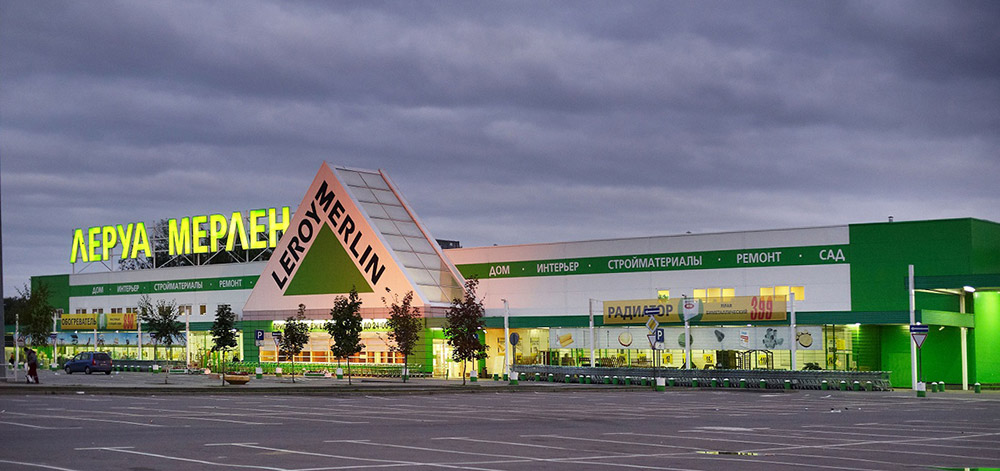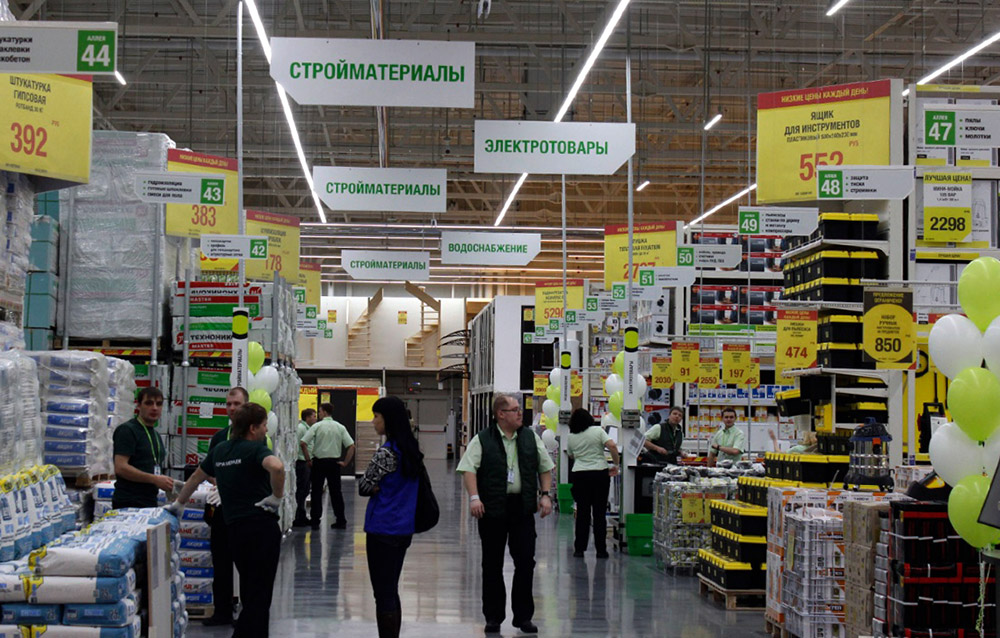The Russian DIY market decreased by 5-7%
Leroy Merlin is a large DIY retailer that plans to expand its geography and open new outlets in Siberia and the Far East this year. Three large hypermarkets in Novosibirsk – this is not the limit of the retailer's capabilities. Next summer, the company plans to open a hypermarket that will cover several Siberian localities.
DIY stands for Do It Youself, that is, it is a market of household items that the buyer purchases for self-decoration of premises for various purposes, as well as garden plots. Following the results of last year's work, the company presented its vision of the situation and further development of the DIY market in different Russian regions.

The company's management says that according to statistics, this market of goods is gradually declining. During the year, sales figures across Russia fell by up to 7% in different regions of the country. At the same time, the Siberian market is currently responding well to the creation of new DIY stores. Novosibirsk and Tyumen are considered the most active cities in terms of sales. Omsk, Kemerovo, and Novokuznetsk are slightly behind them. If we talk about Omsk, then there are large stores selling DIY goods – Castorama, OBI, Baucenter.
The impact of the crisis, according to management, is felt not by the number of customers, but by the shopping basket. The flow is still high, but people are choosing cheaper products. And the number of purchases is getting smaller. People buy only those things that they need directly today and do not plan purchases for the future.
Since the country is now gradually emerging from the crisis, there is an effect of deferred demand. The management of Leroy Merlin believes that in the segment of DIY products, the effect will be observed in about six months. There is already a positive trend, but there is still demand for goods from a cheaper price category. Expensive goods are bought in small quantities.
Nevertheless, the past year 2016 was quite successful and successful for the company. 17 retail outlets were opened throughout the country, and three hypermarkets were opened in Siberia and in major regional cities. The growth of trade turnover was from 3 to 5 percent.
This year, the management has planned to open several new hypermarkets throughout Russia. The firm explains such an active market conquest with a five-year plan, which it implements. According to this document, about 20 stores of the chain will be opened annually in Russia. The crisis did not affect the implementation of the project too much. So, in 2016, 17 new points were opened. The plan is developed until 2020.
In the major cities of Siberia – Irkutsk, Khabarovsk, Omsk, Krasnoyarsk, Barnaul, a total of six points will be opened from March to September. New stores are also planned to be built in Novosibirsk. To date, there are three retail outlets of the company in the city, the estimated market capacity is at least six hypermarkets. In the summer of next year, the 4th retail outlet will be opened, the area of the hypermarket will be as impressive as the rest of the stores, that is, at least 10,000 square meters. meters.
The birthplace of "Leroy Merlin" is France, so here-there is about one hypermarket per 100 thousand inhabitants. Thus, three stores in Novosibirsk is not a lot at all.
The company's management is also turning its attention to other regions. So, now the eyes are focused on Kazakhstan: in Alma-Ata, the Leroy Merlin hypermarket will be opened in the summer of 2018. Analysts have revealed that in Kazakhstan, the potential of DIY stores is at least 20 pieces, so there is a lot to develop here. By the way, other companies in the DIY segment are already entering the country, for example, an OBI store will soon open here.
The company has to invest heavily in the development of its projects. Investments in opening stores in Siberia and beyond the Urals amount to more than 1,300 million rubles per store. The exact amount depends on many factors, including the location of the store. The payback period is projected to be up to eight years.

The company tries to build relationships with local suppliers. Local producers are a priority. Today, the share of Russian suppliers is 50%, and in the coming years, the task is to increase this figure to 80%. In Siberia, Leroy Merlin actively works with many local suppliers. Many products from different categories are supplied by local manufacturers. Management notes the financial benefits of such cooperation. But the problem is that not every manufacturer is ready to provide the appropriate volumes.
In Siberia, there are problems with the supply of wood. For example, difficulties arise with plywood, clapboard, chipboard. It is more profitable for manufacturers to sell these product categories to China, so Leroy Merlin periodically experiences difficulties with suppliers of these products.
In the DIY segment in Siberia, Leroy Merlin sees no serious competitors. The extensive Domocenter network ceased operation in 2016. The company notes such competitors as the Saturn network and Colorlon, segments partially intersect with such firms as IKEA, Kaleidoscope of Comfort and Coziness, and the Big Dipper. If we consider competitors on the scale of the entire Russian market, the management of Leroy Merlin considers the OBI, Castorama, Baucenter and some other networks to be the most significant players.
The company's market share in Russia is about 9%. On the territory of Siberia, this indicator is much higher and according to analytical results is 30%.
The company "Leroy Merlin" was founded in France at the beginning of the 20th century. In Europe, the organization is the undisputed leader in terms of turnover in its market segment. Specialization-sale of products to household users who use it for self-improvement of the territory or home. In Russia, Leroy Merlin opened its first stores in 2004 in the Moscow Region. Since then, the company has been gradually gaining new markets. To date, there are 59 operating hypermarkets in Russia, which operate in 26 regions of the country.
Pub date: 2021.06.01